Let's say you want a form that receives as input
- String
- Number
- Text from the user
In your Firestore console, create a collection and give it a name (like formDataTree), give an autoID and add the fields

Then, I would put those scripts at the bottom of the head tag in your WebGL template. So, create a folder in Assets named WebGLTemplates, and a folder named New Template (or whatever name you will) and add an index.html there.

According to the documentation, this index.html should be similar to
<!DOCTYPE html>
<html lang="en-us">
<head>
<meta charset="utf-8">
<meta http-equiv="Content-Type" content="text/html; charset=utf-8">
<title>Unity WebGL Player | %UNITY_WEB_NAME%</title>
<script src="%UNITY_WEBGL_LOADER_URL%"></script>
<script>
var unityInstance = UnityLoader.instantiate("unityContainer", "%UNITY_WEBGL_BUILD_URL%");
</script>
</head>
<body>
<div id="unityContainer" style="width: %UNITY_WIDTH%px; height: %UNITY_HEIGHT%px; margin: auto"></div>
</body>
</html>
So, with this new information, it'll be something like this
<!DOCTYPE html>
<html lang="en-us">
<head>
<meta charset="utf-8">
<meta http-equiv="Content-Type" content="text/html; charset=utf-8">
<title>Unity WebGL Player | %UNITY_WEB_NAME%</title>
<script src="%UNITY_WEBGL_LOADER_URL%"></script>
<script>
var unityInstance = UnityLoader.instantiate("unityContainer", "%UNITY_WEBGL_BUILD_URL%");
</script>
<!-- The core Firebase JS SDK is always required and must be listed first -->
<script src="https://www.gstatic.com/firebasejs/7.17.1/firebase-app.js"></script>
<!-- TODO: Add SDKs for Firebase products that you want to use
https://firebase.google.com/docs/web/setup#available-libraries -->
<script src="https://www.gstatic.com/firebasejs/7.17.1/firebase-analytics.js"></script>
<script>
// Your web app's Firebase configuration
var firebaseConfig = {
apiKey: "",
authDomain: "",
databaseURL: "",
projectId: "",
storageBucket: "",
messagingSenderId: "",
appId: "",
measurementId: ""
};
// Initialize Firebase
firebase.initializeApp(firebaseConfig);
firebase.analytics();
</script>
</head>
<body>
<div id="unityContainer" style="width: %UNITY_WIDTH%px; height: %UNITY_HEIGHT%px; margin: auto"></div>
</body>
</html>
Then, under Player settings, select that template.

Then in the body of the template, have a form with its visibility to hidden. Include things from the game as well as any inputs you want filled out in the browser:
<form id="webForm" style="visibility:hidden;">
<input type="hidden" id="stringInput" name="stringInput">
<input type="hidden" id="intInput" name="intInput">
<label for="webInput">web input</label><input type="text" id="webInput" name="webInput">
<button type="submit">Submit</button>
</form>
Then below the Firebase script and the form, include a submit listener for the form on the page which will submit it to Firestore (based on this answer):
myForm.addEventListener('submit', function(evt) {
evt.preventDefault(); //Prevent the default form submit action
var strVal = myForm.stringInput.value;
var intVal = myForm.intInput.value;
var webVal = intInput.webInput.value;
var formData = {
"strVal" : strVal,
"intVal" : intVal,
"webVal" : webVal
};
firebase.database().ref('/formDataTree').push( formData ); // Adds the new form data to the list under formDataTree node
});
All in all, the index.html should be something like this
<!DOCTYPE html>
<html lang="en-us">
<head>
<meta charset="utf-8">
<meta http-equiv="Content-Type" content="text/html; charset=utf-8">
<title>Change Mapping | %UNITY_WEB_NAME%</title>
<script src="%UNITY_WEBGL_LOADER_URL%"></script>
<script>
var unityInstance = UnityLoader.instantiate("unityContainer", "%UNITY_WEBGL_BUILD_URL%");
</script>
<!-- The core Firebase JS SDK is always required and must be listed first -->
<script src="https://www.gstatic.com/firebasejs/7.17.1/firebase-app.js"></script>
<!-- TODO: Add SDKs for Firebase products that you want to use
https://firebase.google.com/docs/web/setup#available-libraries -->
<script src="https://www.gstatic.com/firebasejs/7.17.1/firebase-analytics.js"></script>
<script>
// Your web app's Firebase configuration
var firebaseConfig = {
apiKey: "",
authDomain: "",
databaseURL: "",
projectId: "",
storageBucket: "",
messagingSenderId: "",
appId: "",
measurementId: ""
};
// Initialize Firebase
firebase.initializeApp(firebaseConfig);
firebase.analytics();
</script>
</head>
<body>
<div style="height:20px; width: %UNITY_WIDTH%px; background: green;" onclick="unityInstance.SetFullscreen(1)"><b>Click here to make it full screen.</b></div>
<div id="unityContainer" style="width: %UNITY_WIDTH%px; height: %UNITY_HEIGHT%px; margin: auto"></div>
<form id="webForm" style="visibility:hidden;">
<input type="hidden" id="stringInput" name="stringInput">
<input type="hidden" id="intInput" name="intInput">
<label for="webInput">web input</label><input type="text" id="webInput" name="webInput">
<button type="submit">Submit</button>
</form>
<script>
var myForm = document.getElementById("webForm");
myForm.addEventListener('submit', function(evt) {
evt.preventDefault(); //Prevent the default form submit action
var strVal = myForm.stringInput.value;
var intVal = myForm.intInput.value;
var webVal = intInput.webInput.value;
var formData = {
"strVal" : strVal,
"intVal" : intVal,
"webVal" : webVal
};
firebase.database().ref('/formDataTree').push( formData ); // Adds the new form data to the list under formDataTree node
});
</script>
</body>
</html>
Using the apiKey, authDomain, etc in the template it means that it will show up when inspecting the page or viewing page source as. Yet, as mentioned here, it's ok to share that information.
Then, in your Assets folder, create a Plugins folder and add to it a .jslib file, for instances named form.jslib, that has a function that shows the form, and puts game data into the form's hidden inputs.

mergeInto(LibraryManager.library, {
ShowWebForm: function (importantString, importantInt) {
var myForm = document.getElementById("webForm");
myForm.stringInput.value = Pointer_stringify(importantString);
myForm.intInput.value = importantInt;
myForm.style.visibility="visible"
},
});
After the steps up to this point, if you get in the console net::ERR_BLOCKED_BY_CLIENT, simply deactivate AdBlocker for that site as that's why you get that error.
Finally, in Unity, declare that function and call it when appropriate. So, considering you have a newly created scene (so it only has Main Camera and Directional Light), you could call that method in some code that gets called in the new scene. It's a static method so as long as you can find the data you need for the parameters you can call it from anywhere.
[DllImport("__Internal")]
private static extern void ShowWebForm(string importantString, int importantInt);
public void Start()
{
// Suppose we want to send the version of unity the app is running on
// and the unix timestamp at start
string unityVersion = Application.unityVersion;
System.DateTime epochStart = new System.DateTime(1970, 1, 1, 0, 0, 0,
System.DateTimeKind.Utc);
int cur_time = (int)(System.DateTime.UtcNow - epochStart).TotalSeconds;
ShowWebForm(unityVersion, cur_time);
}
Alternatively, if you don't want to have the user fill things out in the browser, you can leave the form invisible and instead of setting it to visible, dispatch a submit event:
mergeInto(LibraryManager.library, {
ShowWebForm: function (importantString, importantInt) {
var myForm = document.getElementById("webForm");
myForm.stringInput.value = Pointer_stringify(importantString);
myForm.intInput.value = importantInt;
myForm.webInput.value = "some other value from the game could go here";
myForm.dispatchEvent(new Event('submit'));
},
});
Can't test at the moment, so be aware of typos or other syntax errors.



